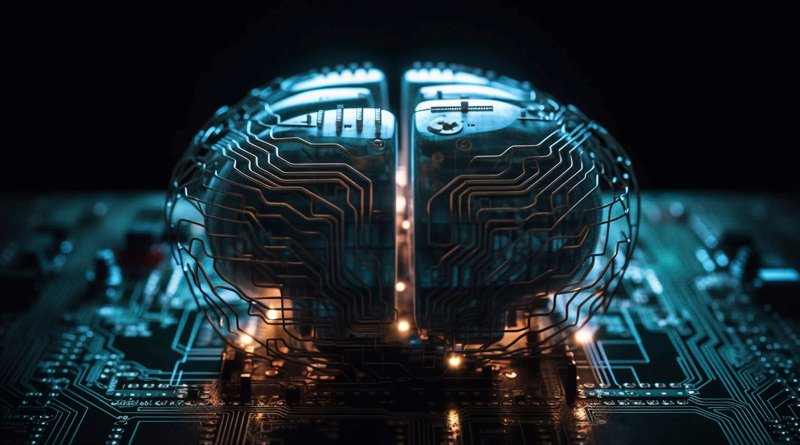What is Generative Artificial Intelligence?
|
Getting your Trinity Audio player ready...
|
Generative Artificial Intelligence is an advanced area of Artificial intelligence which has gained prominence in recent years. With rapid technological advancement, machines are becoming increasingly capable of creating original, realistic and even artistic content.
In this article, we will explore what Generative Artificial Intelligence is, its applications, how this technology works and its implications for the future.
The Concept of Generative Artificial Intelligence
Generative Artificial Intelligence, or IAG, refers to AI systems designed to generate autonomous, previously unseen data such as images, text, audio, and more. In this way, it acts unlike Conventional Artificial Intelligence, which focuses on solving specific problems based on pre-existing data, as IAG seeks to create content through complex algorithms and neural networks.
How Generative Artificial Intelligence Works
The functioning of Generative Artificial Intelligence is based on two fundamental principles: generative models and discriminative models. Generative models are responsible for creating data, while discriminative models evaluate the authenticity and quality of these creations.
This combination is essential in techniques such as Generative Adversarial Networks (GANs), where two models, the generator and the discriminator, compete against each other in a zero-sum game. The generator attempts to create increasingly realistic data, while the discriminator seeks to distinguish between generated data and real data. In this way, this iterative process results in increasingly convincing creations.
Generative Artificial Intelligence Models
In the area of Generative Artificial Intelligence, there are several advanced models and techniques that have been used to create autonomous and unprecedented content. Some of the top models include:
Generative Adversarial Networks (GANs):
GANs are one of the most popular and influential models in Generative AI. As we mentioned, they consist of two main components: the generator and the discriminator. The generator creates data samples, such as images or text, while the discriminator evaluates whether these samples are real or machine-generated.
The goal is for the generator to improve its creations over time to fool the discriminator. Thus, this adversarial training process results in increasingly realistic creations.
Autoencoders:
Autoencoders are another widely used type of generative model. It is composed of a neural network that learns to compress the input into a latent space (encoding) and then reconstruct the original output from this encoding. This technique is often used to compress and generate data, such as images or music.
Recurrent Networks and LSTM (Long Short-Term Memory):
These models are mainly used to generate data sequences such as text and music. Recurrent networks, including LSTM, have the ability to handle long-term dependencies in sequences. In this way, they become suitable for generating content with cohesion and context.
Transformers Networks:
Transformers models have recently gained prominence and have been widely used in generative tasks such as machine translation and text generation. These models are known for their ability to process sequences of data in a parallel and efficient manner.
Variational Autoencoders (VAEs):
VAEs are models that combine autoencoder concepts with probabilistic techniques. They map input data into a latent space, but unlike conventional autoencoders, VAEs allow random sampling in this space to produce new creations.
Flow-based Models:
These models are based on invertible transformations that map input data to a probability distribution in latent space. This allows data generation by randomly sampling the latent space.
Natural Language Processing (NLP):
Natural Language Processing (NLP) is an area of Artificial Intelligence that focuses on enabling machines to understand, interpret and generate human language naturally. NLP models are essential for text generation, machine translation, summarization, sentiment analysis, question answering, and many other language-related tasks.
In Generative Artificial Intelligence, NLP models play a crucial role in generating autonomous and coherent text. For example, Recurrent Neural Networks (RNNs) and their variants, such as LSTM and GRU, are often used to generate text sequences such as sentences and paragraphs. Therefore, these models have the ability to remember important contextual information and are therefore suitable for generating text with cohesion and logic.
Furthermore, NLP techniques, such as the use of pre-trained models, such as BERT (Bidirectional Encoder Representations from Transformers), have been incorporated into generative systems, allowing machines to better understand context and generate more accurate and semantic texts.
Artificial Neural Networks (ANN):
Artificial Neural Networks (ANN) are an approach inspired by the functioning of the human brain and are widely used in many areas of Artificial Intelligence, including Generative AI.
Neural networks are composed of layers of artificial neurons, where each neuron processes input information and passes it on to the next layer, eventually reaching the output layer.
In Generative AI, Artificial Neural Networks are used to train complex generative models, such as Generative Adversarial Networks (GANs), which we mentioned earlier.
Natural Language Processing (NLP) models and Artificial Neural Networks (ANN) are key pieces in Generative Artificial Intelligence, enabling the creation of autonomous, accurate and relevant textual content. These technologies continue to evolve and play an essential role in various applications, making it possible to create more natural texts, conversations and interactions between humans and machines.
These are just some of the main models used in Generative Artificial Intelligence. Each model has its specific characteristics and applicability, and the choice of the appropriate model depends on the task in question and the data available for training. As research continues to advance, new models and approaches emerge, further enriching this fascinating area of Artificial Intelligence.
Applications of Generative Artificial Intelligence
Generative Artificial Intelligence has several practical applications in various industries. One of the most prominent areas is the creation of art and design. Artists and designers are using generative algorithms to generate unique pieces of art, produce original music, and even create innovative fashion.
Another application is in the gaming industry, where IAG is used to create realistic environments and characters, providing immersive and captivating gaming experiences. Furthermore, IAG has been used in medicine, helping to generate molecules for new medicines and aiding in more accurate diagnoses.
Ethics and Challenges of Generative Artificial Intelligence
Despite promising advances, Generative Artificial Intelligence also raises ethical concerns. The creation of AI-generated content can lead to copyright and plagiarism issues, as it is difficult to define authorship of works produced by algorithms.
Another challenge is the misuse of IAG to disseminate false and misleading information, which can affect trust in information sources and the integrity of society itself.
In short…
In short, Generative Artificial Intelligence represents an exciting frontier of technology, with the power to transform diverse industries and open up new creative possibilities. However, it is essential to address ethical challenges and ensure the responsible use of this technology for the benefit of society.
As research continues to advance, it is important to closely monitor developments in this area and find an appropriate balance between innovation and ethics. Generative Artificial Intelligence is a fascinating chapter in the AI journey, and its potential is truly inspiring.




Pingback: O que é comunicação integrada e como ela pode fazer a diferença - Vero Contents